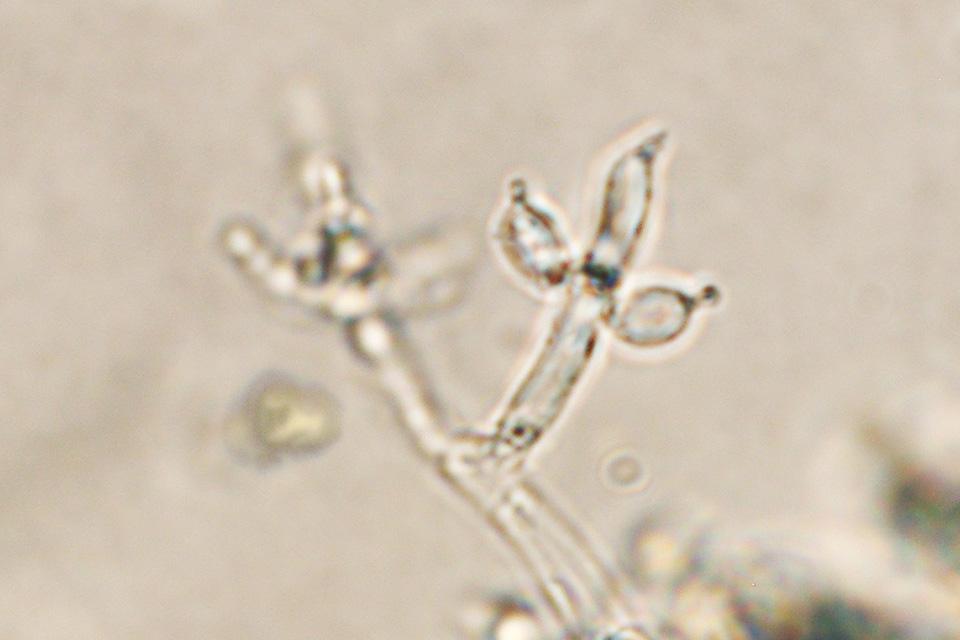Criteria for Successful Biocontrol Candidates on the Farm
Using biological agents to help manage plant diseases is no longer a novel concept. Research on biological candidates, development of biological products, and deployment of such materials in agriculture have been occurring for a long time. However, the search continues for additional biological products that are effective, reliable, and affordable for growers of outdoor, field-produced row crops.
The list of biological products for row crops is rather short due to the challenges of getting biologicals to work in field contexts. For new candidate biologicals and the products containing them, well-defined criteria need to be met.
Criteria to Meet
Is the biocontrol candidate effective under field conditions?
Of course, the bottom line question is “Does the product work?” Does the use of the biological agent clearly reduce disease problems and result in increased quality and yields?
For the row crop farmer, are these benefits evident in the outdoor setting of these commodities? For the researcher studying biological candidates, the road to a successful product can be an arduous one.
The effectiveness of a biological control organism often starts with experiments taking place in the artificial setting of the laboratory petri dish or growth chamber. Promising candidates can then be tested on greenhouse-grown plants, to see if relief from pathogens can be achieved. However, encouraging results from lab or greenhouse studies do not necessarily translate into success in the field. Extensive field studies must follow.
Measuring the effect of a biological candidate applied in the field is no easy task, as many factors are involved.
Has the product been applied appropriately, so an effective population of living propagules is in place?
For foliar applications, have environmental conditions such as dry, hot weather and UV radiation hampered and killed the agent? For soil applications, are factors such as lack of moisture, pH, and other parameters inhibitory to the agent?
Finally, in these field experiments has the candidate biological agent been placed in a position in which its activity can be demonstrated?
Some biologicals actually colonize and kill plant pathogens. Such candidates must therefore be next to and in direct contact with the pathogen. Other agents work as competitors and inhibitors, which involves complex interactions and physiological mechanisms. These candidates must become established so their metabolic processes can operate and reduce the impact of plant pathogens.

The Trichoderma fungus, often distinctly green in color, is a commonly researched biocontrol agent for managing plant pathogens.
Photo by Steven T. Koike
Would the biocontrol product be a practical fit into production practices?
Like any new tool, a biological control candidate must fit into the existing production schemes employed by the farmer or be of such a benefit that the grower will modify practices to accommodate the new biological tool.
Timing: The application of a biological product, whether to the crop itself, bare ground, or the previous crop’s residues, must fit within the timing established by all the other sprays, ground preparation, fertilizer applications, cultural practices, and irrigations already being deployed. Row crop production is a complicated chain of events in which lots of people, equipment, products, and other resources are engaged. A biological product will need to be effectively integrated into this chain.
Frequency: Some research findings show that increasing the number of applications of particular biologicals can increase the disease control benefits. However, the “more is better” rule is difficult to apply here. Additional sprays will need to be scheduled between multiple events on an already packed crop production calendar. Crop thinning, tractor cultivation, weeding crews, and fertilizer applications are on tight schedules. Multiple irrigations, which make the field impassible, further complicate application schedules. Adding more biologicals also means adding more costs to the budget, which is another obstacle.
Economics: As with all farming inputs, biocontrol candidates must fit into already tight budgets associated with row crop production. Early research efforts on new biological possibilities may demonstrate interesting results; however, such preliminary studies often use high rates that, when converted to per acre values, would be impossible to apply and/or afford. Final rates for a biological product must balance between the amount needed to be effective and the amount a customer would be willing to pay. Market factors also influence such decisions. If rival biological products are priced at a certain level, then the new candidate product likely has to be comparably priced in order to be competitive.

Trichoderma spores are produced on microscopic, cross-shaped structures.
Photo by Steven T. Koike
More Biological Options Needed
For row crop production, the industry needs more biological products that can assist in managing plant pathogens. Such products need to be effective and dependable, with performance being consistent over time. Products need to fit within an already complex farming system.
Data-driven research is needed to document how best to deploy such biologicals. Finally, profitability is a bottom-line criterion for all farming, so new biological candidates must justify their use by helping control plant diseases in economically sound ways.










